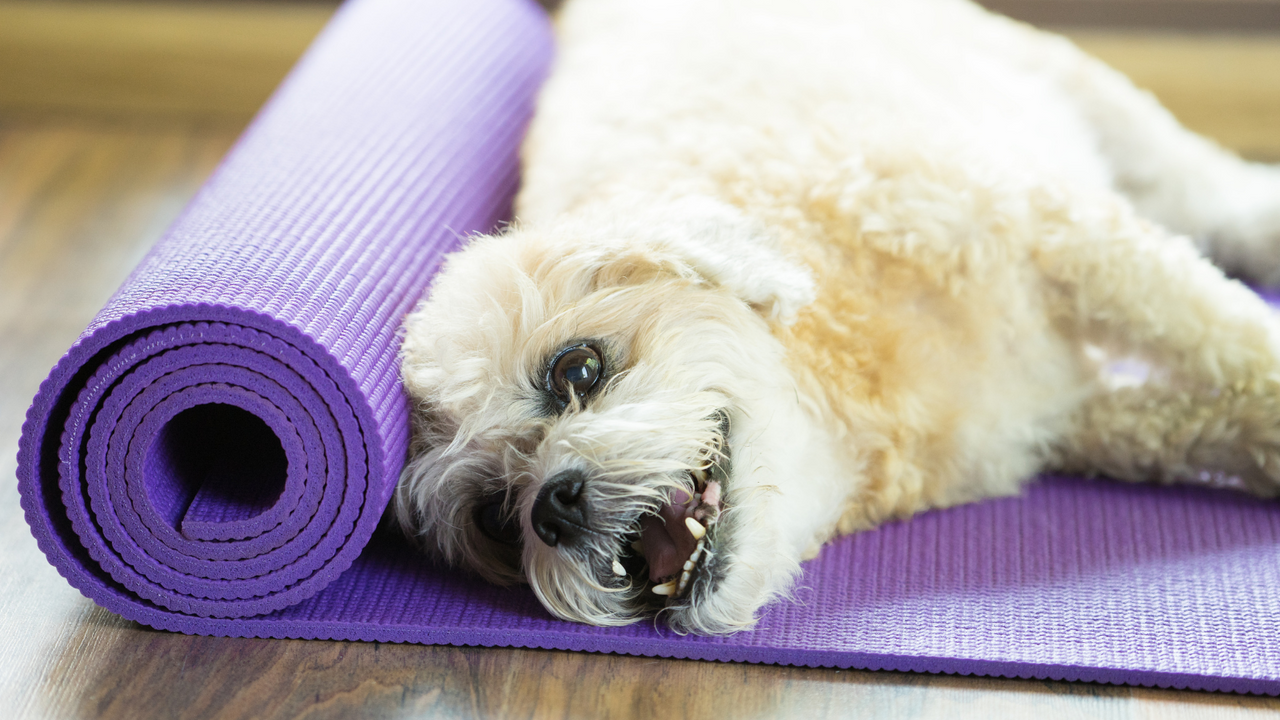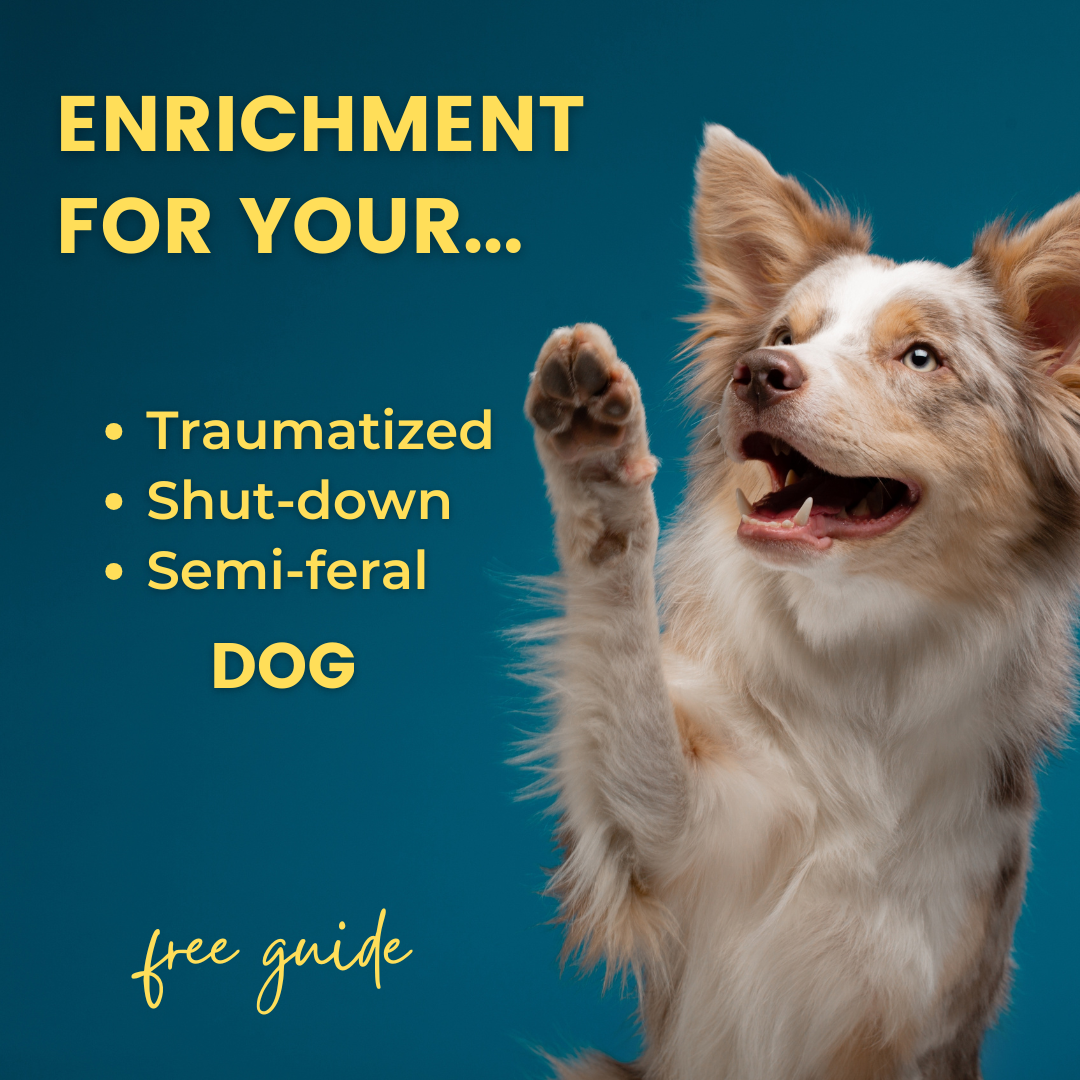
This week's post is the third installment of our "Building Confidence" series. Members of our free Facebook support group provided a list of behaviors they felt indicated their dog was feeling confident, and one of them was "lying down and relaxing". So in this video I talk about beginning mat training.
"Mat training" can mean different things to different trainers. Here, it means training a dog to go to a mat, dog bed, or other target, and stay there for at least a short time. When training our dog Pancake, I didn't train a particular body position like a "sit" or "down" on the mat. If the dog's body position is important to you though, make sure to include that in. your training.
Here are the beginning mat work steps we covered:
Supercharging the Mat
By "supercharging" the mat, I just mean provide lots of reinforcement for your dog approaching, being on, and staying on the mat. Here are some simple steps to try at home:
- When your dog is near the mat, sprinkle several treats on the mat;
- Once your dog is readily stepping onto the mat, sprinkle treats on the mat AFTER they've moved onto the mat, rather than before;
- Keep giving treats on the mat as long as your dog stays there. In the beginning of training, these will need to be very frequent, maybe every couple of seconds.
Make Training Easy for the Family
No matter how easy you make the beginning mat training steps for your dog, they won't make progress if you don't actually DO the training. We're all busy and training isn't always at the top of the list. How to make training easy to fit into your day? Here are a few ideas:
- Place mats in locations where you spend a lot of time. The kitchen, near the sofa, maybe in your office;
- Near each mat, have a container of treats easily available to remind you to reward your dog if they're on their mat;
- Toss treats onto your dog's mat opportunistically throughout the day while you're watching TV, working, or prepping dinner.
Add a Cue
It's helpful to be able to ask your dog to go to their mat at a specific time. If you've done a good job "supercharging" the mat, there's a good chance that your dog will head on over the mat any time you're near one. But here are steps to add a cue, even one you can use from a distance:
1. Food lure. You might not need this step if you've already "supercharged" the mat. Sit right next to the mat, with a treat in your hand. Hold out the treat to your dog, let them sniff it, and slowly move the treat over to the mat. Release the treat to your dog when they're on the mat.
Some fearful dogs won't readily follow food held in your hand, in which case try dropping the treat onto the mat and moving your hand away, then wait to see if your pup is comfortable moving onto the mat.)
2. Point to the mat. This is just what it sounds like. Start right next to the mat, and point to or even tap the mat with your fingers. Sprinkle treats on the mat when your dog steps onto it (or sits or lies down on the mat, depending on your training goals.)
3. Add a spoken cue. Not everyone needs a verbal cue, but it can be handy if your dog might not be in sight or looking at you when you want them to go to their mat. It's easiest to add this after your dog goes to the mat reliably when you point to or tap on it.
To add the spoken cue, say your cue, pause 2-3 seconds, then point to or tap the mat. Reward your dog when they go to the mat. After repeating this many, many times, your dog should start to move toward the mat when you give the verbal cue, rather than waiting for your hand signal.
4. Add distance. If you need to send your dog to their mat without walking over to it, very slowly increase your distance from the mat when giving the "go to mat" cue. I recommend starting just one small step away from the mat, then giving the cue. Once that's easy for your dog, try standing 2 steps away. Make sure to vary not just your distance, but the direction you move away from the mat.
Be prepared to break this down into tiny training steps. For many dogs this is really difficult at first.
If you have a fearful dog and would like 1-on-1 support with this training, you're invited to join our monthly training membership, or sign up for private training, and get the support you need.
If you try these tips and have success, or trouble, we want to hear from you. Join our Facebook group and post your questions or comments there, or email us at [email protected].
Categories


Have a dog who is too anxious to have fun? Grab this free guide & video lesson all about how to teach your extremely fearful dog their 1st enrichment game.


Community
We offer a free private Facebook support group for owners of fearful dogs to connect and share their stories. Join us there.


